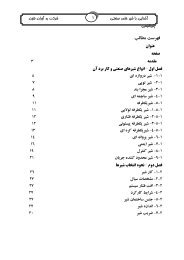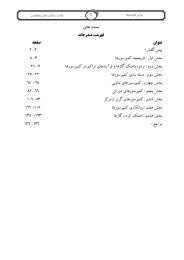Review Problems
Review Problems
Review Problems
You also want an ePaper? Increase the reach of your titles
YUMPU automatically turns print PDFs into web optimized ePapers that Google loves.
Chapter 12 Radiation Heat TransferSpecial Topic: Heat Transfer from the Human Body12-74C Yes, roughly one-third of the metabolic heat generated by a person who is resting or doing lightwork is dissipated to the environment by convection, one-third by evaporation, and the remaining one-thirdby radiation.12-75C Sensible heat is the energy associated with a temperature change. The sensible heat loss from ahuman body increases as (a) the skin temperature increases, (b) the environment temperature decreases,and (c) the air motion (and thus the convection heat transfer coefficient) increases.12-76C Latent heat is the energy released as water vapor condenses on cold surfaces, or the energyabsorbed from a warm surface as liquid water evaporates. The latent heat loss from a human bodyincreases as (a) the skin wettedness increases and (b) the relative humidity of the environment decreases.The rate of evaporation from the body is related to the rate of latent heat loss by Qlatent mvapor h fg whereh fg is the latent heat of vaporization of water at the skin temperature.12-77C The insulating effect of clothing is expressed in the unit clo with 1 clo = 0.155 m 2 .C/W = 0.880ft 2 .F.h/Btu. Clothing serves as insulation, and thus reduces heat loss from the body by convection,radiation, and evaporation by serving as a resistance against heat flow and vapor flow. Clothing decreasesheat gain from the sun by serving as a radiation shield.12-78C (a) Heat is lost through the skin by convection, radiation, and evaporation. (b) The body loses bothsensible heat by convection and latent heat by evaporation from the lungs, but there is no heat transfer inthe lungs by radiation.12-79C The operative temperature T operative is the average of the mean radiant and ambient temperaturesweighed by their respective convection and radiation heat transfer coefficients, and is expressed asToperativehconv Tambient h Th hconvradrad surrTambient T2When the convection and radiation heat transfer coefficients are equal to each other, the operativetemperature becomes the arithmetic average of the ambient and surrounding surface temperatures.surr12-60













